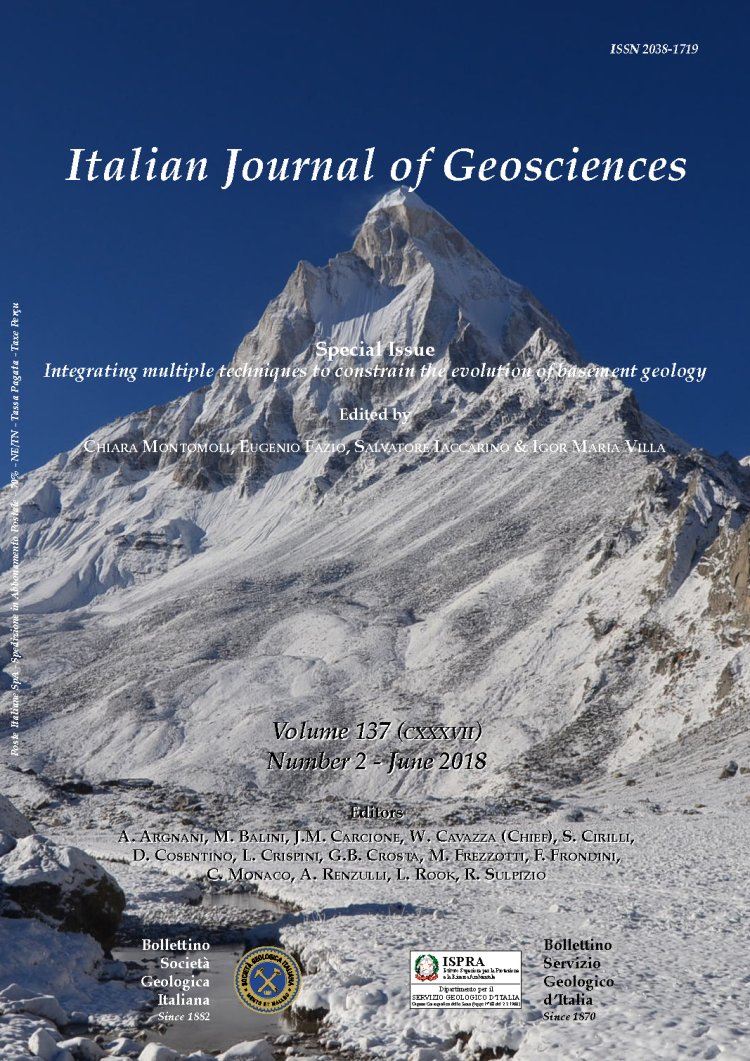
Structural setting of the Yalaxiangbo dome, SE Tibet (China)
Jie Chen (1), Rodolfo Carosi (1), Hui Cao (2), Chiara Montomoli (3), Salvatore Iaccarino (1), Antonio Langone (4) & Guangxu Li (2)
(1) Department of Earth Sciences, University of Torino, Torino, Italy.
(2) Institute of Geology, Chinese Academy of Geological Sciences, Beijing, China.
(3) Department of Earth Sciences, University of Pisa, Pisa, Italy.
(4) C.N.R., Istituto di Geoscienze e Georisorse, UOS Pavia, Italy.
Corresponding author e-mail: jie.chen@unito.it.
Volume: 137 (2018) f.2
Pages: 330-347
Abstract
The Yalaxiangbo gneiss dome (SE Tibet) in eastern Himalaya is one of the major metamorphic culminations in the Tethyan Himalayan Sequence, referred to as North Himalayan Gneiss Domes (NHGD). It comprises three main tectonic units separated by an upper ductile/brittle and a lower ductile detachment. The upper tectonic unit, above the upper ductile/brittle detachment, includes unmetamorphosed to low-grade metamorphic Triassic-Lower Cretaceous slate and
metapsammite of the Tethyan Himalayan Sequence. The middle tectonic unit, sandwiched between the upper and lower detachments, consists of mylonitic granite, staurolite-garnet-two mica schist and biotite-plagioclase gneiss affected by the ductile top-to-the north extensional shear of the lower detachment. The lower tectonic unit consists of mylonitic gneiss, leucogranite plutons, dikes and sills.
By integrating meso-/micro-structural analyses, petrographic and Laser Ablation Inductively Coupled Plasma-Mass Spectrometer (LA-ICP-MS) in situ U-(Th)-Pb monazite geochronological data from selected samples affected by ductile shear, we constrain the activity of the lower detachment at ~ 18 Ma and the shearing along the upper detachment later than ~ 15 Ma. The kinematic, geochronology and petrologic features of the Yalaxiangbo detachments are similar to the South Tibetan Detachment system, which crops out in southern Tibet.
Keywords
Get Full Text